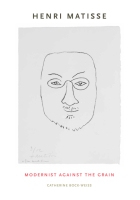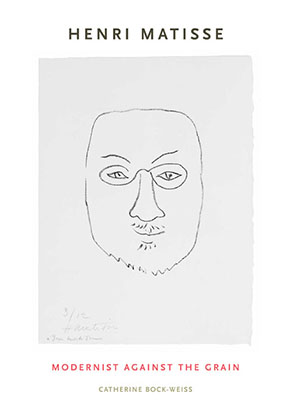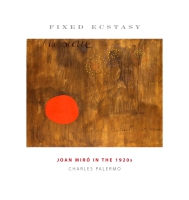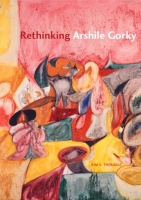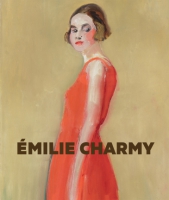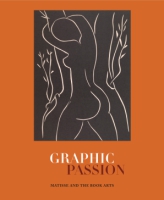Henri Matisse
Modernist Against the Grain
Catherine Bock-Weiss
“Henri Matisse: Modernist Against the Grain makes an important contribution to the field, looking at Matisse from a variety of new angles and offering compelling readings of hitherto underexamined aspects of his life and of his work and reception.”
- Description
- Reviews
- Bio
- Table of Contents
- Sample Chapters
- Subjects
“Henri Matisse: Modernist Against the Grain makes an important contribution to the field, looking at Matisse from a variety of new angles and offering compelling readings of hitherto underexamined aspects of his life and of his work and reception.”
“[Henri Matisse: Modernist Against the Grain] makes an important contribution to a fuller understanding of the complete man and his entire work.”
Catherine Bock-Weiss is Professor Emerita of Art History at the School of the Art Institute of Chicago. She is the author of Henri Matisse and Neo-Impressionism, 1898–1908 (1981) and Henri Matisse: A Guide to Research (1996).
Contents
List of Illustrations
Acknowledgments
Introduction
Part I. Matisse: The Man
1. The Media as Medium: Public Self-Portraits
2. “Brutal Egotism”: Gertrude Stein’s Matisse
Part II. Matisse: His Work
3. Strangers in Paradise: Bathers by a River
4. Chamber Music: Woman Before an Aquarium and Woman on a Rose Divan
Coda: Some Propositions Concerning Matisse’s Art of the 1920s
Part III. Matisse: His Critics
5. A Formalist Critique: A Dance Critic Looks at Matisse: André Levinson in 1929
6. A Vitalist Critique: Decoration and Spirituality: The Byzantine/Islamic Matisse
Afterword
Notes
Bibliography
Index
Introduction
Late photographs of Henri Matisse by Cartier-Bresson portray an avuncular octogenarian with a radiant smile, seated with Buddha-like serenity in a verdant garden . This reassuring image of Matisse is that of the fulfilled painter of flowers and young women, of color and harmony, who avoided troubling the viewer with violent or painful subject matter. A widely reproduced youthful self-portrait of 1906 , however, reveals the artist as bold yet anxious, assertive yet wary; this is the artist of brutal experimentation, self-doubting retrenchments of style, and restless explorations in disparate media. Between the complacent geriatric image and the youthful self-portrait lies the gulf of nearly fifty years of anxious search—for himself and for his means of expression. Writers on Matisse have made every attempt to unite these two avatars into an integrated personality whose artistic intentions and achievements were broadly consistent throughout his life. Yet Matisse continually eludes these unifying portrayals, especially those that depict him as achieving a synthesis of his often-antithetical drives and ambitions.
Matisse also eludes the effort to align these fifty years of production with retrospective histories of a progressive modernism and a transgressive avant-garde. His contribution to the history of modern painting, begun in 1905, seems to have been completed by 1917. His “canonical moment of modernism” was over. Thereafter, the “master narrative” of modern art moves on to the disruptions of international Dada and French surrealism, the utopian programs of Russian constructivism, Dutch De Stijl, and the German Bauhaus, the rise of abstract expressionism, and the so-called neo-avant-gardes of the post–World War II period. Matisse’s career cannot readily be mapped onto this history; in fact, it brushes stubbornly against the grain of this history. So what can it mean that Matisse is habitually numbered among the twentieth century’s most important modern artists, that he has been called “Saint Modern Art”?
The question can be framed differently, however. At issue may not be the status of Matisse as a modernist, but the adequacy of our received notion of modernism, our overdetermined and prescriptive notion of which art merits the title “modernist.” Exclusionary, ideologically selective narratives are no longer adequate to account for the heterogeneous and nonsynchronous unfolding of the arts of the last century. Indeed, for over two decades the long-standing modernist canon has been challenged by equally theoretically driven postmodern critiques, but new paradigms for the concept “modernism” have been in short supply.
Since 1966, when Harry Levin posed his retrospective question,, “What was modernism?” sundry answers have been advanced. There is general agreement, however, in our post-postmodern present, that modernism, however defined, is a completed historical phenomenon, while social modernity (that is, industrial, technological, political, and economic changes in Western society) is ongoing. There is some consensus that the historical avant-garde is dead and cannot be revived in its earlier forms under contemporary conditions, and that many earlier conceptualizations of modernism were formed within extra-aesthetic theories that are now exhausted or discredited. By 1976, Malcolm Bradbury could confidently assert that a study of modernism marked by “pluralism, relativism and perspectivism” is consistent with modernism itself, but this judgment is already made from a postmodern perspective.
With this study, I make no claim to have used Matisse’s varied production to map a new definition of modernism, any more than I have attempted to provide a unified portrait of the artist. I have preferred to bracket for the moment the limiting and still-contested period concept “modernism” for the more general historical notion of “twentieth-century art production,” the totality of which responded in one way or another to technological and social modernity. All of twentieth-century art production, in my view, constitutes the cultural response to economic and social modernity, either as adversary or advocate. A number of modernisms, some still deeply traditional, were constituent elements of the whole complex of modernist initiatives. Twentieth-century art, until now only selectively examined and increasingly limited to an established canon of modernist artists and works, still awaits its full measure of chronological microstudies. Especially needed are close analyses of the interchange between all of the arts and their institutions, detailed studies that would aerate the closed histories of particular media.
Rather, in these essays I have put my eye to the kaleidoscope of Matisse’s life and work, rotating it so as examine now one, now another facet of the brilliant and fractured patterns that appear there. Because Matisse’s character was so petit bourgeois, his output so varied, uneven, and to a large extent incoherent in style and media, he remains a modern artist of particular interest. His successes and achievements in the way of formalist invention do not interest us now to the same degree that his failures and career aporias do. Marginalized works have now moved to the center of Matisse studies. Each chapter in this book, then, is a discrete exploration of a specific problem related to these heteroclite and idiosyncratic aspects of the man, his work, and his critical reputation. Certain patterns emerge that, I hope, illuminate specific and limited aspects of his career.
The first two essays take a sidelong look at Matisse as the “man who suffers” rather than “the mind which creates,” to use Eliot’s distinction. Writers on Matisse have attempted to integrate Matisse’s lifelong effort by locating its source in his personality, his artistic intentions, or his psychological profile. Until recently, details about any of these three sources were sketchy. Matisse’s personality and details of his life were illuminated in the recent two-volume biography by Hilary Spurling; his artistic intentions were made clearer with the publication of collections of his writings and letters; and the artist’s psyche has been probed of late with the tools of postmodern psychoanalytic theory. We must keep in mind, however, especially in dealing with Matisse, that “we do not solve the problem of disorder [in artistic production] by making it the problem of a disordered self. To draw a circle of consciousness [i.e., the artist’s] around fragmentation is not to transform fragmentation into coherence.” Uneven, diverse, “disordered” production points as well to conditions outside the artist, that is, his artistic, social, even political and economic milieu.
The first chapter treats the ways in which the artist acted as the primary agent in constructing his professional image. Matisse used both published interviews and authorized photographs of himself as self-portraits, to shape the public reception of his work and to present himself, the artist, as a purposive and unified subject. This audience persuasion was necessary because his work in the early years was difficult, often unprecedented and, early and late, subject to abrupt changes. His public had to be persuaded, for example, that the 1920s Nice-period canvases were the product of the same artistic will as the more abstract paintings of 1909–17, that the cut-paper decorations were the products of the same artist’s goals as those of the painter of intimate still lifes. But his projected public image as an integrated artist was also something of a mask to offset the too-intimate revelations of the works themselves, which all too often revealed the nerve-ridden temperament, the uneasy probing of a blind searcher, the repetitious motifs of an obsessive fetishist. Not only did Matisse create a respectable and consistent public persona through his canny utilization of the new mass communications media, he rationalized his artistic choices in the language of and in direct response to the critical discourses of the day. His use of the mass media also instantiates its complicity in the “advancement” of advanced art. The mass media ultimately created a vogue for modernism (which included Matisse) in interior design, architecture, and fashion, as well as painting and sculpture.
The second chapter deals more directly with an aspect of Matisse’s self-identity that was forged in the dramatic chiaroscuro of melodrama. Whether forged or discovered, Matisse’s subjectivity is examined in relation to that of another artist, a woman, primarily on the basis of their temperaments, goals, and methods. Gertrude Stein preferred to identify herself with Pablo Picasso, but, as I argue, she was in many ways simply too close to Matisse to admit their similarities. The comparison/contrast between Matisse and Picasso, recently investigated in major exhibitions, is here focused through the not-disinterested lens of Stein’s keen perceptions and vaulting ambitions. The emotional and artistic self-constructions of Matisse and Stein in their developmental years of 1901–12 are remarkably parallel. Both grappled early with the romantic notion of artist as genius and of art’s moral role as the only absolute value in a meaningless world. Anthony Giddens describes the “psychic problem” of modernity: “Personal meaninglessness—the feeling that life has nothing worthwhile to offer—becomes a fundamental psychic problem in circumstances of late modernity. We should understand this phenomenon in terms of a repression of moral questions which day-to-day life poses, but which are denied answers. ‘Existential isolation’ is not so much a separation of individuals from others as the separation from the moral resources necessary to live a full and satisfying existence. The reflexive project of the self generates programmes of actualization and mastery” (emphasis added).
Both Stein and Matisse mounted the “reflexive project of the self” and the struggle against meaninglessness in the stark contrasts of what might be called theatrical melodrama. Those contrasts were already preframed in the late-romantic discourses on genius, the crises in society and culture, and in the (salvific) nature of art making. As the first chapter demonstrates, however, Matisse was careful to construct his public image, as an actor inhabits a role, in order to channel those private struggles for authenticity into a professional narrative acceptable to his bourgeois audiences. The older model of the artist as well-trained professional is presented to the public, while evidence of the artist as unpredictable creative genius is offered in the actual paintings.
The next two chapters deal with specific works. The end of World War I is the hinge on which these paintings pivot: this was a critical moment of crisis not only for Matisse but for advanced painting more generally. Bathers by a River (1916) belongs to the body of more abstract paintings that has positioned Matisse as a major figure in high modernism. The painting is monumental in size, theme, and style, utilizing cubist devices for solemnly decorative ends. It constitutes the apogee of the artist’s wartime effort to forge a style of formal synthesis between his late-fauve manner and that of Picasso’s cubism. In sharp contrast, the two postwar paintings, Woman Before an Aquarium (1923) and Woman on a Rose Divan (1921), mark the artist’s radical departure from the manner of the war years. Both of these central chapters deal with the artist’s formal strategies, but they do so in relation to the subject matter and content of the works, rather than considering them as integers of the artist’s avant-garde credentials. My discussion of the troublesome paintings of the so-called early Nice period seeks not so much to rehabilitate the 1920s works, nor to claim them as unacknowledged masterpieces, as to understand them without prejudice in their own terms and in their historical situatedness. My interpretations of all three paintings are meant to be coherent and convincing, but claim to be neither definitive nor exhaustive.
The issue raised by these central chapters and the coda that follows chapter 4 is essential to the inquiry of this book: the question “How could Matisse have produced these formally retardataire, thematically objectionable canvases (that is, of female models and odalisques), after achieving works of heroic modernist import?” becomes: “How must the paradigmatic shift now seen as the essence of modernism be understood to relate to the persistence of discredited art forms in the twentieth century?” These art forms include figurative painting, “politically incorrect” genre conventions, narrative techniques appropriated from cinema and literature, and the resistance to comprehensive theories concerning progress in the arts. How did the recurrence in the twentieth century of these superseded or repressed practices challenge, confirm, or destabilize the very premises of modernism”? The coda to chapter 4 addresses three issues about Matisse’s 1920s works: whether Matisse’s break with the avant-garde in 1917–18 also bespoke a break in the avant-garde itself; whether the small 1920s paintings catered to a bourgeois market in a manner different than did the 1905–17 works; and whether we can better understand the early Nice works by considering them in the light of contemporary silent film practice and theory rather than that of a closed history of painting. Matisse’s alternation of radical invention and more traditional modes needs to be explored, but not explained away because inimical to a certain view of high modernism.
A distinction is made in the French aesthetic tradition between paintings of elevated theme and style and vernacular works that deal with commonplace scenes in a more realist style. Matisse, product of a quintessentially French education, was heir to this differentiation. He saw his own work in the tradition of Grand Style themes and methods, as well as in that of genre works of more intimate scope. Matisse worked in both keys and did not privilege one over the other. Works of the Grand Style, what Matisse called works of the imagination, aimed for unprecedented solutions to the formal and representational needs of painting as a still-evolving praxis. In Matisse’s oeuvre, these works were large in scale, more deliberated and reworked, and were referred to by the painter as his “important” works. His alternative genre paintings aimed only to deepen or enlarge a given convention: they submitted more humbly to natural appearances, and utilized both the conventions of realism in style and traditional genres in subjects. Intimate “figural” art (whether more or less mimetic or “realist”), reemerging at tense moments in the historical disjunctures of change, could also be conceived as offering something distinctively “modern.”
In literary studies, what might be called psychological novels or novels of consciousness take their place in the modernist canon alongside those of unprecedented formal invention. There is no such distinction made in the visual canon, though artists as varied as de Chirico, Grosz, Beckmann, Kokoschka, Pascin, Balthus, and Hopper explore a decentered modern consciousness, its psychological anguish in a period of unprecedented historical turmoil. They portray the anomie and neurotic anxiety of urban living, social displacement, a sense of the “uncanny” in the everyday. These psychological states are evidence of the unassimilated changes in European values and social structures around the time of the Great War. They embody the disenchantment of modern life, render it palpable. A more comprehensive historical concept of the visual arts in the twentieth century would acknowledge the role of subject matter and theme in the many disparate modes (psychological, ironic, formally inventive, nostalgic, satirical) of registering, responding to, and reflecting upon processes of modernization and the experience of modernity. Even though Matisse is not generally included among artists whose works lay bare the social or personal morbidities of the era, it is fruitful to examine the literal subject matter of Matisse’s works of the early twenties, and what the depictions might signify, in the context of other portrayals of contemporary women in painting, cinema, and fiction. The coda explores in somewhat greater detail these and related issues.
The final two chapters deal with the two major strands of critical evaluation of the artist, through a close examination of individual (and unlikely) critics. Chapter 4 looks back, from the vantage point of the Russian dance critic André Levinson’s 1929 formalist defense of Matisse, to the exiled writer’s essays and reviews in French across the arts of literature, painting, dance, and cinema. They exemplify the flexibility of the formalist critical method possible in European writing from 1900. Levinson’s Parisian writings (1923–33) maintain the aesthetic function of art and highlight the difference between a formal method based on poetics rather than on linguistics. Chapter 5 complements chapter 4, tracing an unbroken line of interpreters of Matisse’s oeuvre who have created a critical framework of spiritual, even religious, significance for the artist’s decorative and near-abstract work. These writers, Matthew Prichard, Georges Duthuit, Pierre Schneider, and Rémi Labrusse, exemplify the persistent twentieth-century dissatisfaction with the loss of the religious function of modern art, when it abandoned its spiritual role for an exclusively aesthetic or social one.
Matisse’s official, or public, reputation has long rested on the two major critical pillars that I treat here. The first attempts to unify and judge the work on the grounds of formal invention and the artist’s role in a progressive, secular history of modern art; the second stresses the decorative aspect of the artist’s oeuvre, linking it to non-Western (as well as particular Western) traditions of religious art. The power and longevity of these two quite opposed critical bases for evaluating Matisse’s contribution to modern art point once more to the inconsistencies within, the instability of, our concept of modernism. Not only are the two positions difficult to reconcile with one another, but neither can be applied to the totality of Matisse’s work, which (kaleidoscopically) refuses to cohere in a single gestalt. The two approaches nevertheless manifest the divergent paths by which Matisse’s critics have rendered him homage as a modernist.
Matisse was perhaps the least Nietzschean of modern artists. He had no self-image as prophet, seer, or Zarathustran risk taker, no demiurge to create ex nihilo either himself or a new world. The deepest undercurrent of Matisse’s sensibility was not the culturally “masculine”; destruction was never his prerequisite for creation. He saw no crisis in civilization that, as an artist, he was called upon to remedy. He engaged in no radical rethinking of the media he worked in; the fundamental changes he effected in twentieth-century painting practice were the result of radical redoing within the medium, not a rethinking of its premises or a rebellion against them. “All my life, I have guided myself by what I have done, not by what I have thought,” he admitted later in life. He always perceived himself to be within the parameters inherited from tradition. (The only tradition he consciously repudiated was the official nineteenth-century academicism promoted in his youth.) In fact, he embraced the limitations that stimulated his inventiveness: a particular site, the needs of a patron, a restricted format, a text to be illustrated, a medium’s demands. Matisse needed restrictions to push against, in order to stimulate his combative thrust for liberty, personal and social. His innovations were only incidentally oppositional, proposed overtly as complementary and renewing, yet withal merely stretching established precedents (sometimes out of all recognition, admittedly) rather than breaking with them.
Matisse’s career is marked by the willingness to explore culturally feminized areas. He indefatigably pursued the “women’s genres” of still life, domestic interiors, portraiture, flower painting, and decorative murals. In the interwar period, however, his obsessive subject was not the “human figure” that his “Notes d’un peintre” indicates, but the female body, the gendered figure. Thus, his major subject became that specific to the male artist and viewer in Western culture: the exhausted topos of the female nude as the symbol, the idealized figuration, of beauty and of pleasure. That he was able to wrest powerful, distinctive works from a tired stereotype does not diminish its relation to male sexual desire and dominance over its gendered subject. Ironically, though, some of Matisse’s most inventive work occurs in the large-scale “decorative” panels, in the book illustrations and designs that allowed him to explore more openly the “masculine” themes of sexuality, violence, and terror that he did not permit himself in easel painting. In these exceptional works, the anodyne cliché of the female, equated with benign and nourishing nature, gives way to the representation of male agents of murder, rape, and aggression, who suffer torture and death. These repressed themes, the dark male side of the female topoi, however, are rarely allowed to surface in the artist’s oeuvre.
Despite these exceptions, Matisse’s career was a monk-like flight from the tensions and torments of an active life in an increasingly complex and alienating world and into the therapeutic ascesis of surrender to the Other, the feminine, the aesthetic. One might say that Matisse’s lifetime aim in the arts was a personal one: to find himself in the oceanic freedom from constraint and dividedness that he experienced while working, in the female gaze that mirrored back to him his own pregendered identity, in the bliss of his mother’s face. His art held out the promise, the experience even, of wholeness and serenity, so urgently longed for in a contemporary world that bred pathologies of dividedness and estrangement. His was an escapist and highly individualistic response to the crises in twentieth-century society, not a revolutionary or collectivist one. But insofar as his art responded to a personal psychic need in an alienating environment, his larger aesthetic program aimed simply to extend this benefit to the whole of modern society.
The “new man” of the future-oriented avant-garde was to have been able to imagine a new society and a cultural production that had not yet come to be. But Matisse was a man of little imagination, as he himself admitted; he could not envision a world other than the one into which he was born. He remained in many ways a turn-of-the-century man, spending his last days, like Cézanne a full half century earlier, in provincial isolation. Unimaginative, he was armed only with his sensibilité and a formidable analytic intelligence, using the latter to understand and to evaluate the products of the former. He was unable to formulate a viable method for himself or for his students. (“It makes for a life of torment . . . when an acute sensibility keeps you from leaning on a method for support,” he confided to a friend.) Unable to forge a set of practices useful to others, he did not produce a “school” but only “little Matisses,” as the artist’s followers were scornfully labeled by his detractors. In this, too, he was a modernist like his contemporary, Picasso; neither of them could provide “ways of doing things that can be learned,” that are “sharable.” Modernism, for better or worse, can thus appear to be an individual(ist) adventure, “an essentially solitary and tragic adventure,” as Picasso said with reference to Van Gogh (and himself).
We have noted that Matisse worked alternately in two keys: modest and genre-oriented, and ambitious and style-oriented. In the former, his intimate works reinvestigate a bourgeois Western tradition of domestic order from Dutch interiors to the intimisme of Bonnard and Vuillard, the plenitude of which Matisse never ceased to value and which he saw no reason to bury as moribund in the new century. The realism of the domestic interiors proclaims the virtues of a certain liberal bourgeois ideal of private life, with its materialist base and its empirical methods. A writer has even proposed that “Matisse’s great subject was privacy, the pleasure—unique to modern, middle-class societies—of being left alone.”
In his Grand Style (precedent-defying, “imaginative”) works, Matisse toiled toward the reduction of form, toward austere figuration, and toward fresh solutions of color structure. He did this not by any visionary initiatives in conceiving or imaging, but through his sensitivity to matter, to the most fundamental elements of color, shape, proportion, and balance. He was like an architect who, creating new forms in the process of rehabilitating an old building, finally arrives at elegant spaces and harmonious masses by removing the ornament, the detail, the mean proportions of the preexisting structure that offended his eye; that is, he arrived at a new, satisfying structural shell (abstraction) in spite of himself. Matisse’s most monumental, most prized works were constructed from this reductive dialectic.
Matisse’s transitional century was marked by, even constituted by, the very unwillingness or inability to make a definitive choice between alternatives both perceived as good, by its willful indecision in resolving the problématique of modern civilization. Twentieth-century culture remained in tension between poles of reform and revolution, of nostalgia and messianism, of hope and despair, of ingenuousness and irony, which have been conceptually formulated as mutually negating opposites. Adapting an idea expressed by Siegfried Kracauer in his essay on Walter Benjamin, one might say that if modern culture had been integrated under a unified general concept, its vitality, sense of crisis, and concreteness would have been evacuated. Rather, throughout the century several modes of modernism “jump to one another like electric sparks rather than being ‘sublated’ into a [unified] formal concept.” Each maintains the charge of the other in a necessary interdependence.
Matisse’s oeuvre, indeed his whole career, Janus-faced, instantiates this double presence of possibilities and the historical inexpedience of relinquishing one for the other. At a certain moment (ca. 1918), he hoped to overcome the separation between his two aesthetic modes and achieve a synthesis of the ideal of making paintings about painting and the need to make paintings about “the feeling [he] had about life.” In the end he gave up this attempt at synthesis (in which he was unsuccessful, in any case) and chose the model of the Japanese artist, who simply changed his name and style from time to time in order to avoid stagnation and premature resolution of the painterly problem. Like a juggler or a tightrope walker (to whom he likened himself), Matisse played the dangerous game of both/and throughout his sixty years of work: the juggler’s toss-and-retrieve, the tightrope artist’s advance-and-balance. The polarities (not absolute in any case) were not resolved, they were kept in continual confrontation, each acting as a necessary condition of the other’s raison d’être, as a challenge or a corrective to the other’s hubris.
It may be said that I demonstrate only that Matisse brushes against the grain of a modernism narrowly conceived; that I am employing a formalist history now perceived to have been rejected. But that master narrative of modernism was the one in place during Matisse’s lifetime and in the two decades of afterlife in which his reputation was solidified. The specter of that narrative, no matter how modified or denigrated it is by more recent structuralist, linguistic, semiotic, or psychological approaches, still haunts the literature. One strand of this narrative privileges painting, seen to begin with Manet (or Courbet), continue with Cézanne and cubism/collage, and peak in abstraction, geometric or expressionist. Another strand comprises an antipictorial narrative, that of the politically disruptive avant-garde, which is to some extent at odds with the narrative of a progressive pictorial modernism. In the first account, modernist painting was essentially progressive, that is, it involved the destruction of the illusion of volume and depth so essential to mimesis (and bourgeois “naturalization” of the status quo) by flattening forms, emphasizing surface, and reducing the importance of subject reference. (“Flatness” is still upheld by T. J. Clark as a “metaphor for materiality,” prized for its role in robbing the world of illusory dimension and thus its “other false appearances.”) The parallel narrative of the avant-garde, paradoxically, is the story of the overcoming of the hegemony of painting (even progressive painting), its overthrow by collage and assemblage, photography, installation and performance art, conceptual art, and the positioning of art in the political arena or the critical text. Here, progress is transgressive: art self-destructs (but not entirely—the shards must remain in view, a site of theoretical activity) in order to effect political critique and philosophical agency. In place of formalist flatness, the avant-garde’s radical formal heterogeneity is here a metaphor for antiessentialism and the death of a unified subject. These two stories are rarely reconciled, but both still have their powerful advocates. (In fact, a chastened post-postmodernism is seeking to recuperate certain of their more autonomous or socially engaged elements.) Matisse’s career operates against both of these narratives. Perhaps for one shining period (1904–16) Matisse’s work can be sutured into the story of painting’s “progress,” but the rest of his career fits neither the formalist pictorial paradigm nor that of the transgressive avant-garde.
This is a study about Henri Matisse and only concomitantly about modernism, and then only insofar as Matisse’s career throws into relief the inadequacy of the dominant theories about what modernism was or might have been. But I have made no attempt to provide an alternative view of how modernism might be construed by a new set of criteria. It is too early to name and define our cultural epoch’s defining characteristics. In my view, we can only note that instability, indeterminability, irreconcilable conflict make up the very story of the transitional nature of twentieth-century art; it is the reason for its capacity to continually renew itself and to produce extraordinary works. Matisse, I believe, more than any major artist of his time, lived out that very condition.
Also of Interest
Mailing List
Subscribe to our mailing list and be notified about new titles, journals and catalogs.
